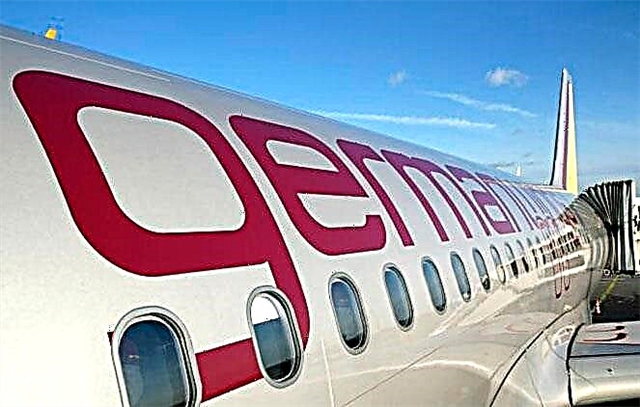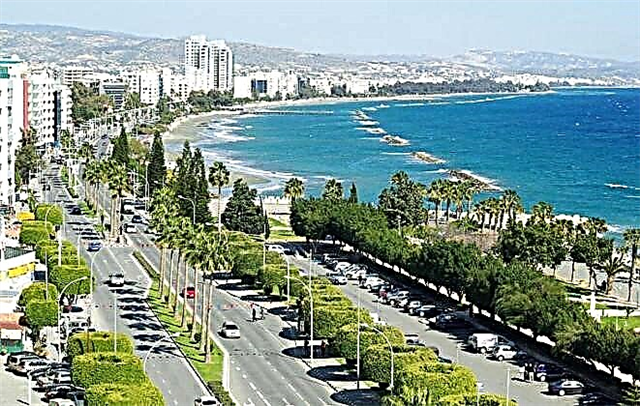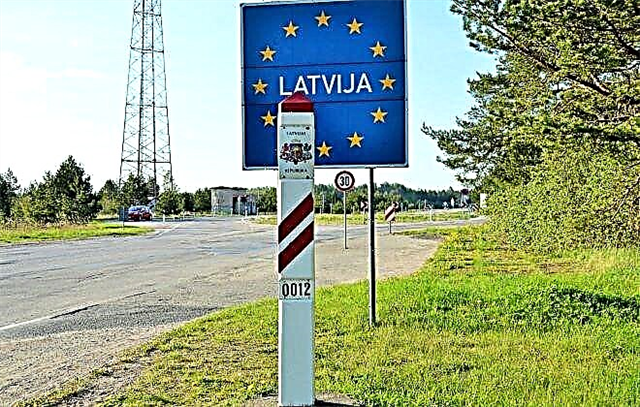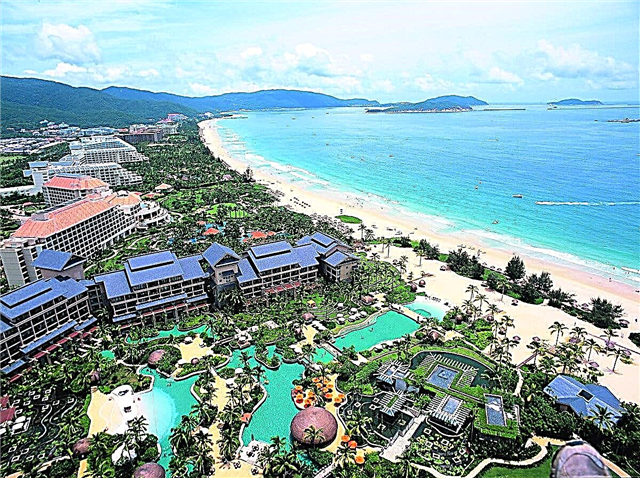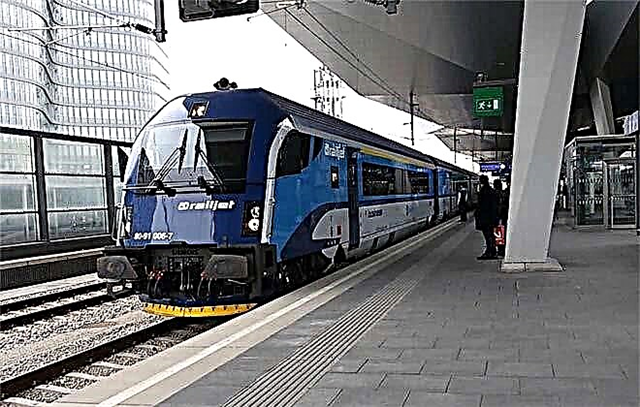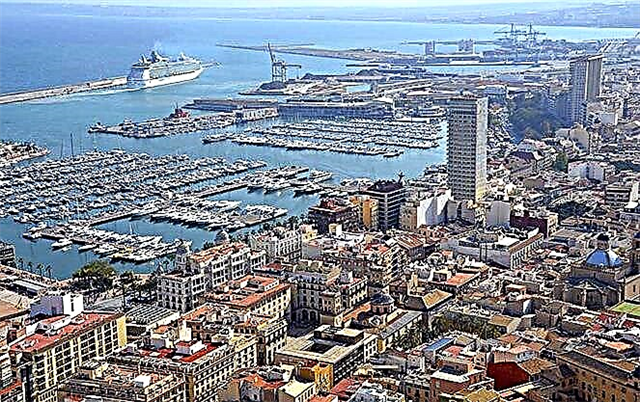The largest oceanarium in Europe, the Holy Grail and other attractions of Valencia are difficult to see in one day. If you have already visited this city, you will definitely want to come back here to continue your fascinating journey through its streets. It will be interesting for tourists of all ages and preferences.
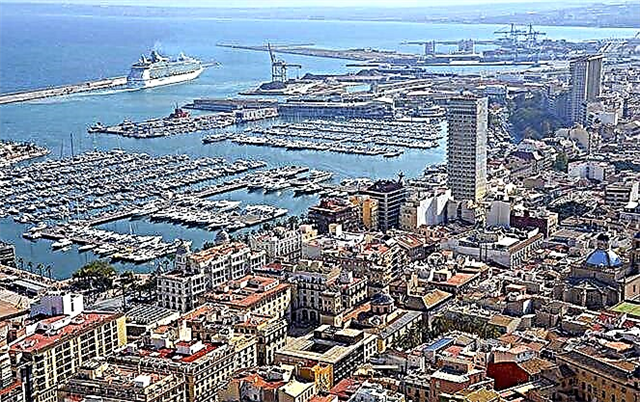
Features of the city
Valencia is the capital of the province of the same name and the third most populous city in Spain. The history of this amazing city began over 22 centuries ago. The Romans, the barbarians, the Moors, and the Spaniards themselves left their mark here.
The heyday of the then Kingdom of Valencia falls on the XV-XVII centuries, when it becomes one of the strategic centers of European trade.
Today Valencia is the second largest port in Spain and a major tourist destination.
It hosts the international Formula 1 racing circuit, popular all over the world. At the same time, the rhythm of life in the city is unhurried, very similar to the provincial one.
Here you will find beautiful architecture, lots of greenery, fresh air, mild climate and very little people. All attractions are located close to each other, so walkers can easily walk around them. Although, if you wish, you can use public transport or go on a trip around the city by bike.
Valencia is the ideal destination for those looking for a break from the hustle and bustle of the city. It is also suitable for tourists with small children.
What every tourist needs to see
First of all, every traveler asks the question: what to see in Valencia. If you have only a few days at your disposal, then it is worth visiting the most picturesque places, one of which is the Central Market. Here you can buy fresh fruits, vegetables, meat, seafood, ready-made food and pastries, various souvenirs.
The most recognizable place in the city is Ayuntamiento square, which houses the town hall and the building of the Central Post Office. If you move south of the square, you can get to the bullring (Plaza de Toros de Valencia). And on the opposite side is the Cathedral of St. Mary.
Certainly, the towers of Serranos (Torres de Serranos) are worthy of attention - these are the ancient city gates, which were built at the end of the XIV century.
One of the most beautiful places in Valencia is the Turia Gardens, which are spread over an area of 110 hectares with a length of 9 km. This is a favorite vacation spot for townspeople and tourists.
Many rare flowers and trees grow in the park, jogging and cycling paths are laid, there are many fountains and bridges, places for sports.

Another interesting place in Valencia is a window-width house. An interesting building is located in the Lope de Vega square just behind the Santa Catalina tower. This is the narrowest house in Valencia - it is only 1.05 meters wide, that is, it barely exceeds the size of a window. Moreover, the house has five floors. In order to find it, you need to make an effort, because it is so narrow that it is almost invisible. The owner painted the façade a peach-burgundy color to make it easy to see.
Walking through the narrow streets of the old city, you will certainly find yourself at the Gothic building of the Silk Exchange. This building, built in the 15th century, is a symbol of the heyday of Valencia as a shopping center and most fully reflects the character of the Spanish Gothic. You can inspect its interior absolutely free of charge.
The City of Arts and Sciences is rightfully considered a modern symbol of Valencia. The amazing complex consists of 5 buildings that are located in the gardens of Turia.
You can explore the interactive city at least 2 days in advance.
Sights of historical value
Lonja de la Seda (Silk Exchange) is a famous architectural monument of Valencia, which is located on the Market Square in the historic center of the city. The exchange is a collection of buildings in which silk was traded in the Middle Ages. It can easily be mistaken for a medieval castle.
The Lonja de la Seda complex of buildings includes:
- tower (there was a chapel, as well as a prison for ruined merchants),
- Hall of Columns, Meeting Room of the Maritime Consulate
- Orange courtyard.
The construction of the tower and the main building of the stock exchange, which lasted from the end of the 15th to the middle of the 16th century, was led by architects Johan Korbera, Pere Compte and Juan Iborra. The garden courtyard and the Consular Pavilion were built under the direction of Domingo de Urteaga.
The building is considered one of the outstanding works of architecture, made in the Spanish (southern) Gothic style. Visitors are especially impressed by the Column Hall, on the floor of which the rules of trading on the stock exchange, laid out from pieces of multi-colored marble, have been preserved to this day.
The Silk Bourse, with its high Gothic vaults, rich interiors decorated with gold and velvet, graceful columns and a cozy courtyard with fragrant orange trees, is a cultural monument of national importance. In 1996, the building was included in the UNESCO World Heritage List.
The Torres de Serranos Gate Towers are the main entrance to the Old Town. They were erected back in 1238 as a triumphal arch. As a defensive structure, the towers were also used as a tribune at ceremonial events. In order for noble people to climb on them, an impromptu elevator was even built - a platform that was lifted with ropes to the desired height. In addition, during a certain period of history, the towers served as a prison for nobles.

Today the Torres de Serranos gates and towers are a museum and open to the public. You can go upstairs using a staircase attached to one of the towers from the inside. From the top of the towers, there is a beautiful panoramic view of the city and the Turia River. Inside one of the towers is the Maritime Museum.
The Valencia City Hall, the City Hall, is one of the most beautiful architectural structures in the city. It is located in the very center of the city on the Town Hall Square and occupies an entire block. The Town Hall consists of two interconnected buildings, built at different times.
Its main facade consists of a central part, which is topped by a three-story clock tower and a balcony, and two side wings with corner round towers. The main façade of the town hall is richly decorated with decorative turrets, balconies, arched windows, Corinthian columns, marble statues, high reliefs and decorative stucco.
The interior of the town hall is also magnificent. The majestic marble staircase with an openwork balustrade, marble sculptures of Jesus and His Sacred Heart, the Banquet Salon (Crystal Hall) with a cylindrical vault, stained glass windows, Bohemian crystal chandeliers, ceiling paintings and arches evoke genuine admiration. Several halls of the town hall are occupied by the Historical Museum of Valencia, where portraits and busts of the Aragonese kings are exhibited.
You can get to the town hall by buses No. 6, 8, 9, 10, 11, 32, 70, 71, 81.
Not far from the town hall is the Palacio del Marqués de Dos Aguas, one of the most popular attractions in Valencia. It was built in the 15th century for a wealthy and influential Rabassa family, whose members were later granted the title of Marquises of Dos Aguas.
It was originally a building in the Gothic style. The building acquired its modern appearance after a large-scale reconstruction carried out in 1740, as a result of which Gothic windows were replaced by baroque openings with embossed framing, the walls received a new design in the Empire style, and a fountain was installed in the middle of the courtyard.New graceful balconies appeared on the facades, decorative plaster replaced the frescoes.
At the moment, the building has the shape of an irregular quadrangle, decorated with towers at the corners. The bizarre design of the facade makes a rather strong impression: you can spend hours looking at intricate plots of compositions and amazing stucco ornaments.
The interiors of the palace of the Marquis Dos Aguas are painted by famous Spanish artists, the halls are inlaid with marble and decorated with paintings.

You can get to the palace by metro to the Colon station or by buses No. 6, 26, 31 to the Marques de Dos Aguas - Pau stop.
Temples and churches of the city
The main church of the Christian community of Valencia, the Cathedral of the Virgin Mary, is located in Queen's Square. It was built in the 13th century under King James I on the site of an ancient Roman temple, which was converted into a mosque during the Moorish rule. In the architecture of the cathedral, completely different architectural styles are intertwined: Gothic - the main part of the cathedral is sustained in this style, Baroque, Renaissance, Neoclassicism. This is due to the long construction of the temple (almost two centuries), as well as the fact that some of its parts were being completed until the 18th century.
However, most tourists seek to get to the Cathedral of Valencia not to admire the variety of architectural styles, but for the sake of cultural treasures stored under the ancient vaults. In particular, in one of the chapels of the temple is kept a unique bowl called the Holy Grail. Most historians claim that this is exactly the cup from which Christ drank during his last supper with the disciples on the eve of the crucifixion.
The Holy Grail, which dates back to the 1st century, was donated to the cathedral by King Alfonso V of Aragon in 1436. According to legend, the Apostle Peter himself brought him to Valencia.

The Basilica of San Vicente Ferrer is located near Piazza Colon. The temple was built in the neo-gothic style at the beginning of the twentieth century. The building, neat from the outside, impresses with its solemnity inside. Tourists do not often come here, but admirers of places of worship will find it interesting.
Valencia museums
The City of Arts and Sciences has become a true jewel of Valencia and a favorite vacation spot for locals and visitors alike. This futuristic complex includes: Science Museum, Oceanographic Park, Planetarium, Umbrakl Botanical Garden, Reina Sofia Palace of the Arts and Agora Multifunctional Center. Here you can have an interesting rest and gain new knowledge.
- Exposition of the Museum of Science. Prince Felipe adapted for children. Here you can touch everything with your hands and even conduct experiments. The ticket price is 8 euros. Representatives of flora and fauna from all over the world are gathered in the largest oceanarium in Europe. Each ecosystem has its own building: birds are noisy in one, unusual tropical fish swim in another, and reptiles lurk in the third. The entrance ticket for adults costs 29.7 euros, for children from 4 to 12 years old - 22.3 euros.
- The Reina Sofia Palace of the Arts hosts opera performances and classical music concerts.
- Umbrakl is a futuristic greenhouse that serves as a botanical garden and art gallery. Its central alley is decorated with sculptures and leads to the Garden of Astronomy with models of the solar system.
- Various events are held in the Agora Center.
- The City of Arts and Sciences is open daily from 10.00 to 19.00.
- The Museum of Fine Arts provides an opportunity to get acquainted with the history and culture of the city. Most of the collection is dedicated to the work of Spanish artists. In the museum you can see the works of Goya, El Greco and others. In addition, there are halls of archaeological finds, furniture and other items from different historical eras.
Working hours: Tuesday-Sunday - 10.00-19.00, Monday - 11.00-17.00.
- The National Museum of Ceramics is located in the Palazzo del Marquez de Dos Aguas. The best collection of ceramics has been kept here since 1947 and numbers about 5 thousand items. The exhibits were brought from different parts of the world, including Japan and China. Most of the items on display are from the personal collection of the founder of the museum, Manuel Gonzalez Martí. You can even see pottery made by the great artist Pablo Picasso.
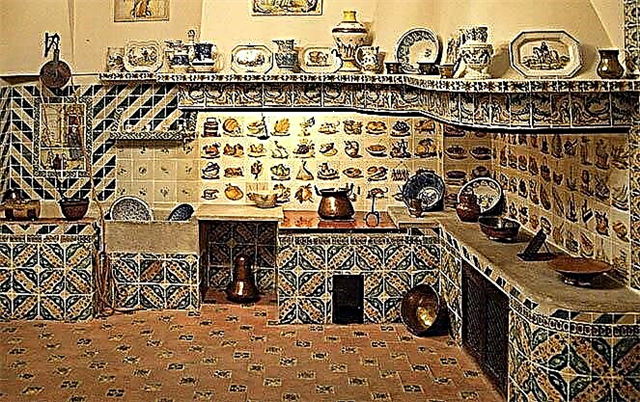
Museum working hours: Tuesday-Saturday - from 10.00 to 14.00 and from 16.00 to 20.00, on Sunday and holidays - from 10.00 to 14.00. Monday is a day off.
The standard ticket price is 3 euros, the reduced price is 1.5 euros, pensioners and students under 25 years old can go free. Free admission for everyone on Saturday and Sunday afternoons.
Interesting parks
The Albufera Natural Park is one of the largest on the Mediterranean islands. The territory of the park has been declared a protected area, so only part of it is open to the public. Mainly birds live here, inhabiting flooded meadows, swamps, canals and ponds. The park is home to ducks, cranes, storks, herons, migratory birds. The territory is conditionally divided into two parts: the central reserve and the "depuradora". The park is free to enter, however guests must obtain a pass at the reception. Those interested can go on a guided tour.

One of the most beautiful parks in Valencia is the Corlevo Gardens, which are located near the Museum of Fine Arts. Rare trees and shrubs grow here, and there is even a bio-garden with some species of animals.
An important role in creating the image of the city is played by the Botanical Garden, on 4 acres of land which grows plants from various climatic zones, including the tropics. Convenient paths are laid along the territory of the garden, benches and gazebos are installed.
Places that will be interesting for children
Young tourists are unlikely to be interested in adult entertainment or excursions, so when going on a trip with the whole family, you need to find out in advance what Valencia has to offer with children. It should be noted that the city has enough places for family and purely children's recreation.
- Towers. The Old Town has a very interesting entertainment for children - they can climb the powerful gate towers. The Towers de Quart are located to the west of the historic center and the Serranos to the north. A magnificent view of the city opens from the top of the towers.
The towers are open Monday through Saturday from 9.30 am to 7 pm, Sunday and holidays from 9.30 am to 3 pm. The entrance costs 2 euros.
- Biopark. There are no cages in this zoo, and various installations mimic the nature of Madagascar and Africa. Be sure to visit the area where lemurs live.
The park is open daily, opening its doors to visitors at 10.00. Ticket prices: standard - 23.8 euros, children - 18 euros, concessionary tickets - 17.5 euros, group tickets - 18.5 euros.
- Gulliver Park.
The free children's park, located in what was once the bed of the Turia River, is a giant figure of Gulliver (about 70 meters), who has just reached the shore after a shipwreck, asleep and pinned to the ground by midgets.
That is, the children playing on this figure, in fact, are the very "Lilliputians". Well, a huge number of ladders, ropes, caves, slopes and slides will not leave indifferent any child.
- Cabesera Park. Here you can ride a boat or a tourist train, and visit the playground.
- Pirate cave in Cuyer. Children who are interested in pirates will love this unusual attraction.
In the summertime, you should definitely visit the water park, as well as the amusement parks.
Where you can have a delicious snack
You can have an inexpensive and tasty meal in Valencia, for example, in small bars in the Abastos area. Simple but very appetizing dishes at an affordable price are prepared in such establishments as La Martinica, Bar Casa Comida Baozi, etc. The Spaniards often visit the U Juan and U Pedro bars - here you can also have a snack at no extra cost and have a good time with friends.
It should be borne in mind that the cheapest lunch in Valencia is on the “menu of the day”, and the highest prices are in restaurants located in the city center.
Maria Mandiles is not the cheapest place, but delicious food and a variety of tapas (snacks) are prepared here.There are always specials on the menu at lunchtime. For example, in the summer it certainly includes the national soups salmorejo and gazpacho. Here you should try potatoes with scrambled eggs, ham and asparagus, squid rings in batter and, of course, cheesecake or brownie with vanilla ice cream. The portions in the restaurant are quite large.

Saona is a cafe that can only be accessed by pre-booking a table. Here you can eat tasty and really inexpensive. For example, a two-course lunch and dessert will cost about 10 euros, while dinner will cost a little more. On weekends, prices go up.
Goiko Grill is an unusual burger shop. You will have to pay up to 14 euros for a burger with fries, but it is worth it. Meat can be ordered in different roasts.
El Balcó del Micalet is another cafe where you can eat first, second and dessert for 17 euros. An unlimited bar costs only 5 euros.
At the Montes restaurant you can taste delicious and inexpensive paella. And Sendai Wok is a place that serves grilled seafood, fish and meat. The visitor pays an entrance fee of 10-12 euros and can enjoy unlimited drinks from the bar.
Also in Valencia there is Chinatown with Chinese restaurants - this is a real salvation for the budget-conscious tourist.
Where to go for a shopaholic
If you decide to go shopping in Valencia, you should not forget about the centuries-old Spanish tradition - siesta. For this country, a lunch break, which lasts several hours, is the norm. It is designed so that in the daytime, in the very heat, employees can go home, have a snack and even get some sleep.
Shops in Valencia are open from 10:00 to 21:00, siesta from 14:00 to 17:00.
Private outlets, in particular antique and designer shops, craft shops, are obligatory closed for siesta. Only large supermarkets and shopping centers work without interruption.
It should be noted that Valencia has a wide range of shopping options: not only modern shopping centers, department stores and designer boutiques, but also markets.
Department stores in the city are mainly represented by the El Corte Ingles chain. You can buy almost everything here - from snacks to scotch, but most of the pavilions offer goods for the fair sex. For example, on the ground floor there are retail outlets with cosmetics and perfumes, on the others - clothes and underwear are sold. There are also specialized shops for children.
In Valencia, there is a tradition of arranging markets right on the streets - spontaneous retail outlets can appear once a week in different parts of the city. However, they only work in the morning.
The famous EL Mercado Colon clothing market is located on Columbus Street. Quality clothes and shoes are sold here. Young people will be able to find bright and fashionable things for themselves.
The El Rastro flea market is also popular and is open only on weekends. On its counters you can find the most unusual goods, for example, antique dishes and furniture, art objects, toys, musical instruments and even filing of old newspapers and magazines.
There are many shopping centers in the city and its surroundings. You can buy things and accessories at a reasonable price or just take a pleasant walk in the Centro Comercial Sale shopping center. There are many shops here, among which there are pavilions of famous brands such as Zara and Springfield. There is a bright play area for kids.
The shopping area of Barrio del Carmen is home to luxury brand boutiques Prada, Louis Vuitton and others.
What can be seen in the surroundings
If you have time, you can explore the surroundings of Valencia. Taking the C6 train or bus number 115f or 046, in just 30 minutes you can be in the ancient city of Sagunto, whose history dates back to 219 BC. It is full of attractions that have been collected here over 23 centuries.

Here you can see the reconstructed ancient Roman theater - in summer it hosts a Greco-Roman festival and plays. Many artifacts from different eras are exhibited in the Historical and Archaeological Museums located near the main square of the city.
You can have a great rest on the beaches of Sagunto, which are marked with the “Blue Flag” for their excellent condition.
There are nightclubs and restaurants in the modern part of the city.
Finally
It is impossible to visit all the interesting places in Valencia in one trip. Only in the City of Arts and Sciences you need to spend more than one day. It will take time to visit numerous museums and parks. Valencia has enough places for families with children: kids will love the unusual zoo with installations, the Science Museum and, of course, parks with slides and attractions.
A huge oceanarium will leave an unforgettable experience for children and adults, where the inhabitants of the deep sea swim in a long tunnel right above the heads of visitors. All major attractions are in close proximity. Therefore, if you correctly build a walking route, you can see a lot of interesting things along the way.




